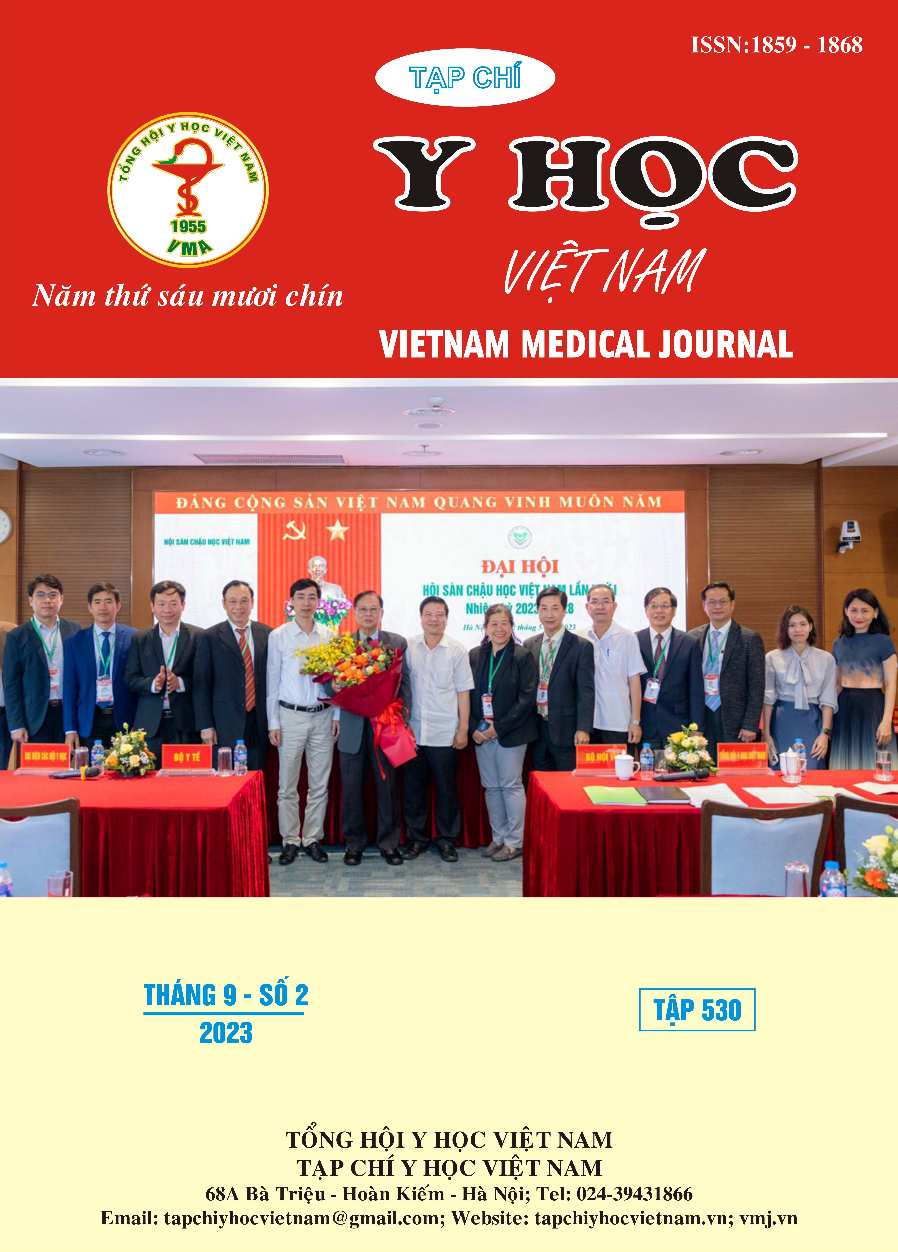URODYNAMICS CHARACTERISTICS OF CHILDREN WITH SPINA BIFIDA LOW-LESION AND SACRAL LESION
Main Article Content
Abstract
Aim: description of urodynamic characteristics of children with spina bifida low lesion and sacral lesion. Subject: retrospetive study medical records result of cystometry with 62 patients suffer from spina bifida having low lumber lesion and sacral lesion at National Hospital Of Pediatrics, from 01.2013 to 31.03.2019. Factors research include bladder compliance, bladder capacity for age and ending vesical pressure, be difined according to International Continence Society and International Children Continence Society. Results: 62 patients including 45.5% male and 54.5% female suffer from spina bifida with low lumber lesion was 40.3% and sacral lesion was 59.7%. Myelomeningocele was 72.6% and lipomyelomeningocle was 27.4%. Mean age evaluation was 3,2 ± 2,8 years (0.3 - 11.5 years). Cytometric results included 67.7% normal bladder capacity for age and 12.9% smaller than bladder capacity for age. 58.1% normal bladder compliance and 41.9% low bladder compliance. 64.5% normal ending vesical pressure. Conclusion: Cystometric factors in majority of spina bifida patients with low lumbar lesion sacral lesion were normal with mean age evaluation of 2.5 years (1.1 - 4.2 years).
Article Details
Keywords
urodynamic, neurogenic bladder, spina bifida
References
2. Schäfer W, Abrams P, Liao L et al (2002). Good urodynamic practices: Uroflowmetry, filling cystometry, and pressure-flow studies. Neurourology and Urodynamics, 21(3), 261-274.
3. Bortolini T, Lucena I.R.S, da Silva Batezini N.S et al (2019). Can dynamic ultrasonography replace urodynamics in the follow-up of patients with myelomeningocele? A prospective concurrent study. Neurourol Urodyn, 38(1), 278-284.
4. Nevéus T, Von Gontard A, Hoebeke P et al (2006). The Standardization of Terminology of Lower Urinary Tract Function in Children and Adolescents: Report from the Standardisation Committee of the International Children’s Continence Society. The Journal of Urology, 176(1), 314-324.
5. Chan Y.Y, Sandlin S.K, Kurzrock E.A et al (2017). Urological Outcomes of Myelomeningocele and Lipomeningocele. Curr Urol Rep, 18(5): 35.
6. Wide P, Glad Mattsson G, Mattsson S (2012). Renal preservation in children with neurogenic bladder-sphincter dysfunction followed in a national program. J Pediatr Urol, 8(2), 187-93.
7. Arora G, Narasimhan K.L, Saxena A.K et al (2006). Risk Factors for Renal Injury in Patients with Meningomyelocele. Indian Pediatrics, 44, 417-420
8. Prakash R, Puri A, Anand R et al (2017). Predictors of upper tract damage in pediatric neurogenic bladder. J Pediatr Urol, 13(5), 503 e1-503 e7.
9. Bruschini H, Almeida F.G, Srougi M et al (2006). Upper and lower urinary tract evaluation of 104 patients with myelomeningocele without adequate urological management. World J Urol, 24(2), 224-8.
10. Ozel S.K, Dokumcu Z, Akyildiz C et al (2007). Factors affecting renal scar development in children with spina bifida. Urol Int, 79(2), 133-6.


